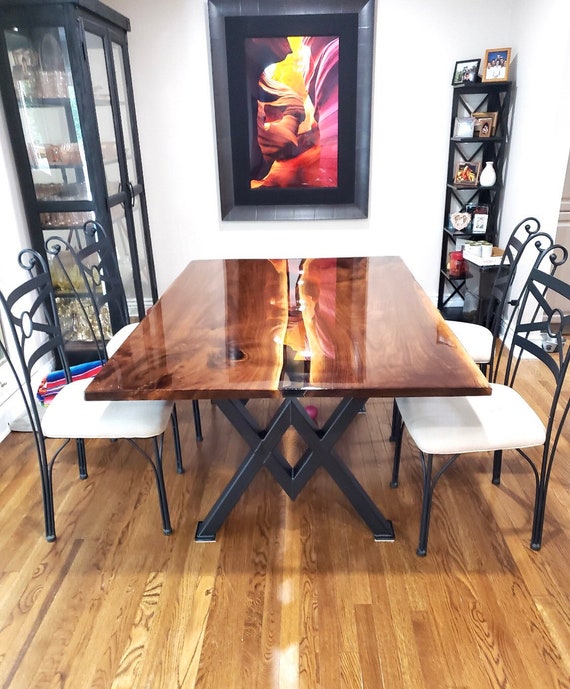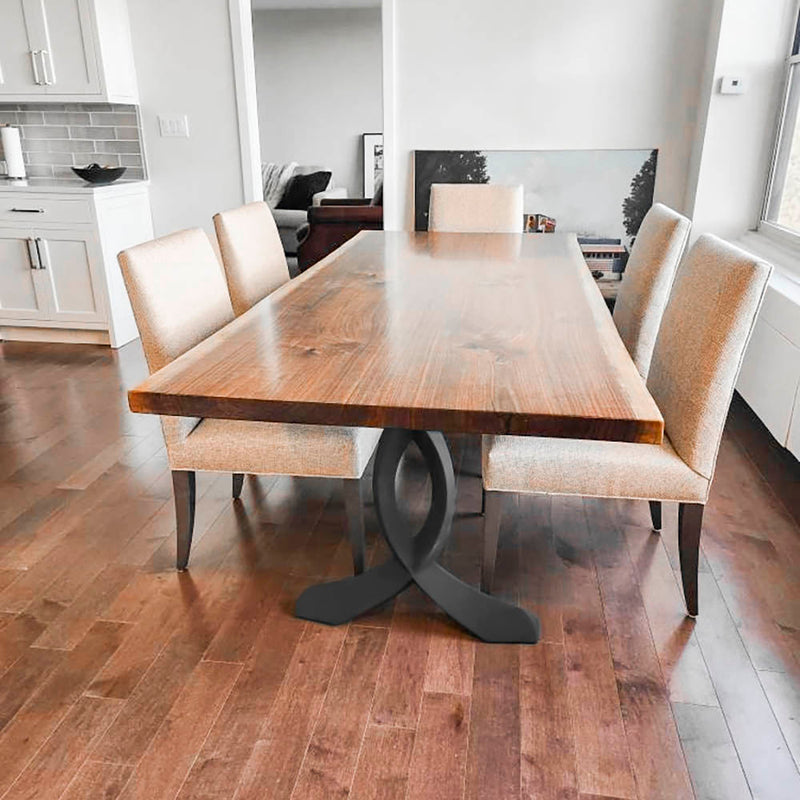How the Right Dining Room Table Legs Can Complete Your Dining Room Look
How the Right Dining Room Table Legs Can Complete Your Dining Room Look
Blog Article
From Traditional to Modern: Discover the Perfect Dining-room Table Legs for Your Style
While classic designs such as cabriole and turned legs evoke a sense of ageless elegance, contemporary designs like barrette and geometric options offer an opportunity for striking visual passion. As you consider these components, the inquiry remains: how can you seamlessly incorporate these varied leg styles to develop a harmonious eating experience?
Recognizing Table Leg Styles
The selection of dining-room table leg designs can dramatically influence both the looks and performance of the area. Each leg style contributes unique aesthetic components and functional functions, satisfying varied layout preferences and use requirements. Comprehending these styles is important for selecting the right table that straightens with your general interior decoration vision.
For example, conical legs offer a clean, traditional appearance that can boost an area's style, while pedestal bases give stability and make best use of legroom, making them optimal for smaller spaces. Hairpin legs, a hallmark of mid-century modern layout, present an industrial panache, permitting a ventilated, open feel. Trestle legs evoke rustic appeal, giving robust assistance and a feeling of timelessness.
Wood legs can bring heat and appearance, whereas steel options commonly communicate a smooth, contemporary ambiance. Inevitably, comprehending table leg designs is essential for developing a natural dining location that mirrors personal design while making certain practicality and convenience.
Standard Table Leg Options
When choosing dining area table legs, standard options frequently symbolize timeless sophistication and workmanship. These designs show an abundant heritage and a commitment to top quality, making them ideal for those that value classic aesthetics.
Among the most iconic typical leg styles is the cabriole leg, identified by its graceful rounded form. This style usually features decorative carvings and is most typically found in Queen Anne and Chippendale furniture. One more popular alternative is the turned leg, which flaunts a collection of smooth, rounded shapes that supply a classic look while keeping security.
Additionally, the straight leg, while straightforward, provides a basic and strong framework that can blend seamlessly with a variety of tabletop designs. For those attracted to ornate detailing, claw-and-ball feet legs stimulate a feeling of grandeur and can act as a sensational focal factor in any eating room.
Lastly, pedestal bases, although not purely legs, supply a different standard option that enables ample legroom and can be magnificently carved. Each of these traditional leg designs contributes to the overall ambiance of a dining-room, weding function with aesthetic allure.

Modern Table Leg Layouts
Modern table leg layouts use a varied series of designs that emphasize tidy lines and cutting-edge products. These layouts often focus on functionality while functioning as striking prime focus within an eating area. Minimal looks prevail, with legs crafted from products such as steel, glass, and engineered timber, which add to a contemporary and airy feeling.
One prominent layout is the hairpin leg, defined by its slim, tapered framework that offers security without frustrating the tabletop (dining room table legs). This style is frequently found in mid-century contemporary furniture and can easily match various table forms. An additional pattern is the use of more info here geometric shapes, where legs might take on angular or unbalanced types, adding visual passion and a touch of artistry

Mixing Designs for Special Rooms
Commonly, homeowners look for to produce special dining spaces that mirror their individual design by blending numerous design aspects. This strategy enables the unification of varied looks, resulting in an unified yet unique environment. For circumstances, combining a rustic wood table with smooth, modern steel legs can produce a distinctive comparison that raises the area's general charm.
Additionally, incorporating vintage table legs with contemporary table tops can stimulate a sense of background while preserving a modern perceptiveness. Such combinations not only display private preference however additionally motivate imagination, enabling homeowners to curate an area that really feels both personal and welcoming.
Color plays a critical function in this blending process; choosing table legs that enhance or comparison with the existing color system can enhance aesthetic interest. Whitewashed legs can soften the boldness of a dark table surface, developing a balanced aesthetic.
Tips for Picking the Right Legs
Selecting the right table legs is necessary for achieving both functionality and visual allure in your dining area. Begin by taking into consideration the overall Recommended Site design of your space. Standard setups gain from legs that feature complex makings or transformed layouts, while modern areas may require sleek, minimalist designs.
Next, evaluate the elevation and stability of the legs. dining room table legs. Standard dining tables range in between 28 to 30 inches in elevation, so make certain the legs enhance this measurement for comfort. Furthermore, durable products, such as wood or metal, can boost security and longevity
Evaluate the leg shape as well-- choices include directly, tapered, or pedestal styles. Straight legs use a traditional appearance, while tapered legs can include a touch of style. Pedestal bases give ample legroom and are optimal for smaller sized rooms.
Verdict
In recap, picking the excellent eating room my link table legs needs mindful consideration of both contemporary and typical styles. Conventional options such as cabriole and turned legs offer timeless beauty, while modern layouts like barrette and geometric forms give a contemporary touch. By balancing leg style, height, and product with the general design, a natural and welcoming environment can be accomplished. Ultimately, the picked table legs must show the wanted visual, improving the eating experience within the room.
The selection of dining room table leg designs can considerably affect both the appearances and performance of the room. Ultimately, recognizing table leg styles is crucial for producing a natural dining location that shows individual style while making certain practicality and convenience.One of the most iconic conventional leg designs is the cabriole leg, characterized by its elegant curved shape. Straight legs supply a timeless look, while conical legs can include a touch of beauty.In recap, picking the perfect dining space table legs calls for careful factor to consider of both traditional and contemporary designs.
Report this page